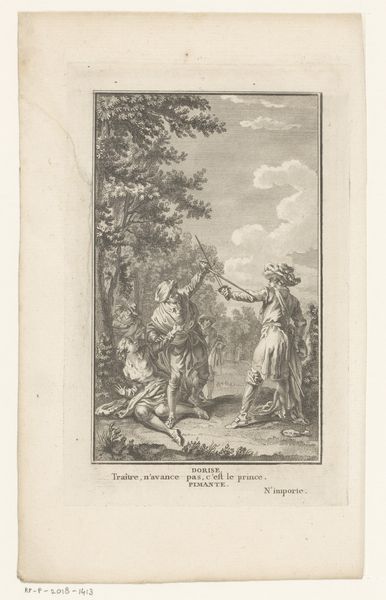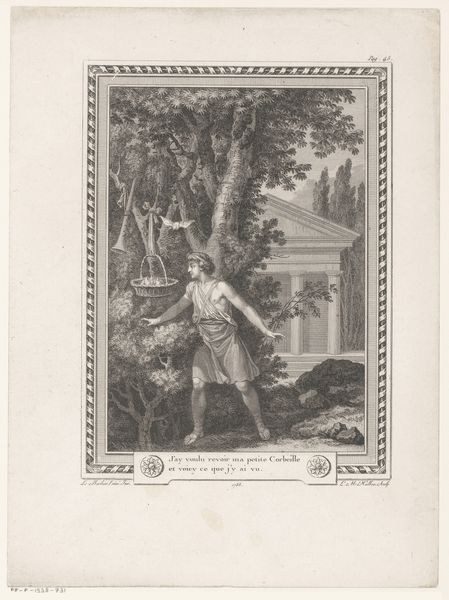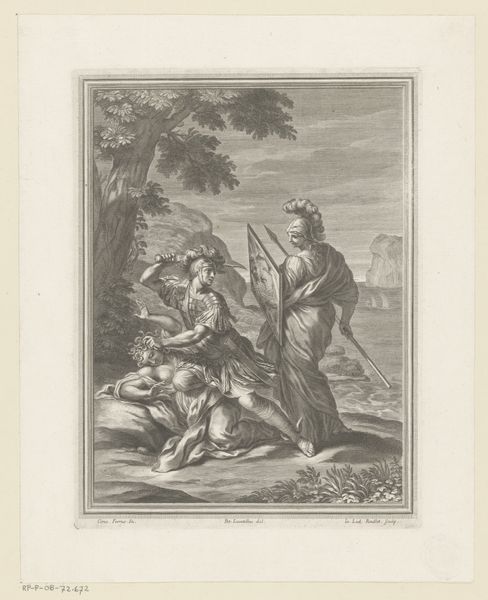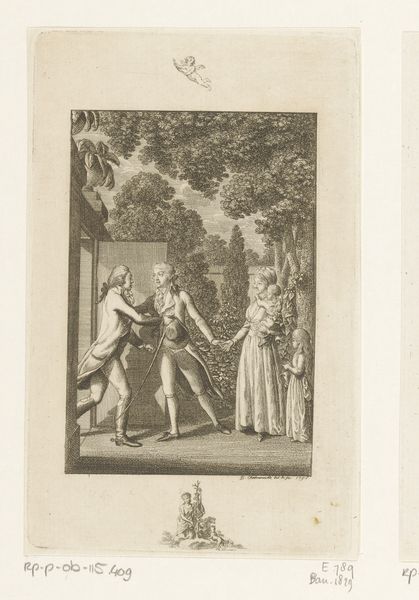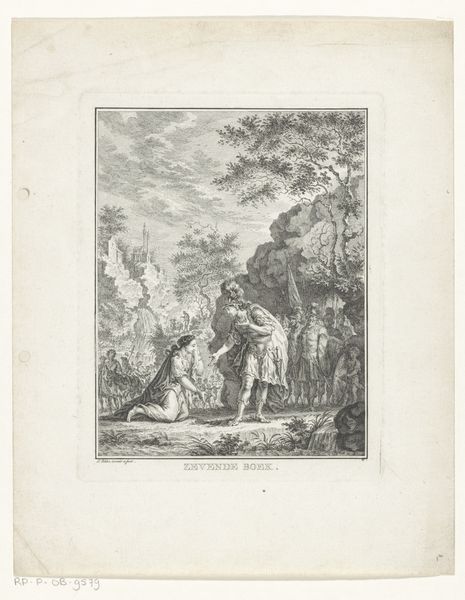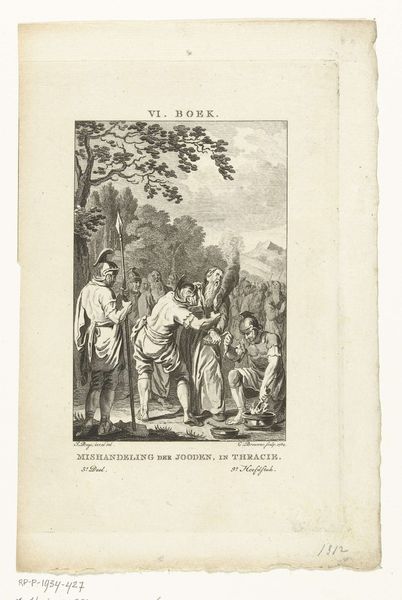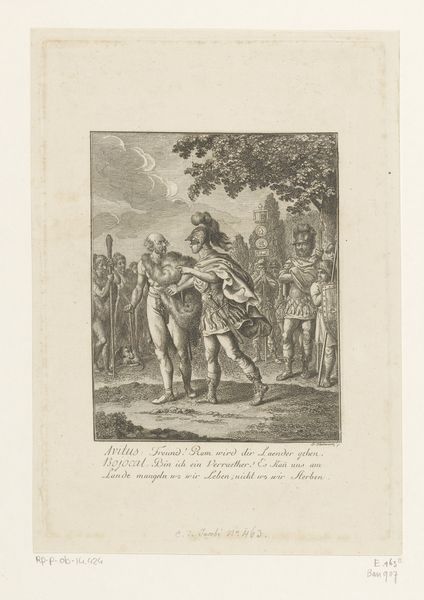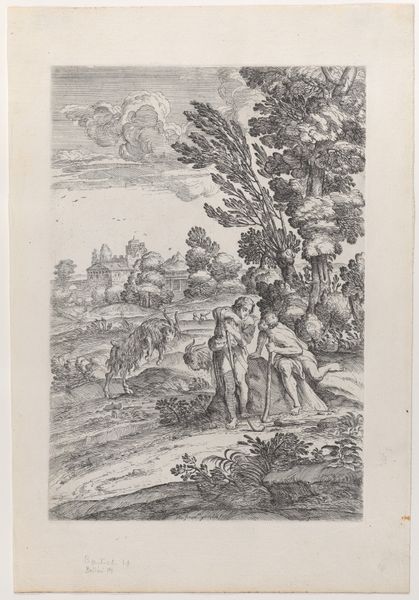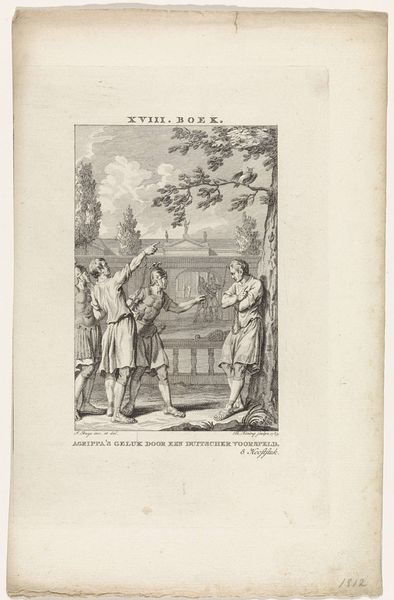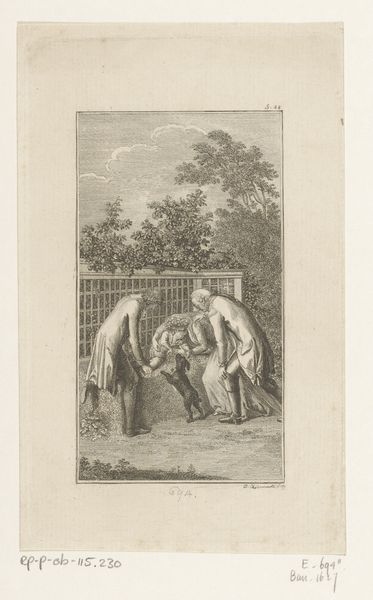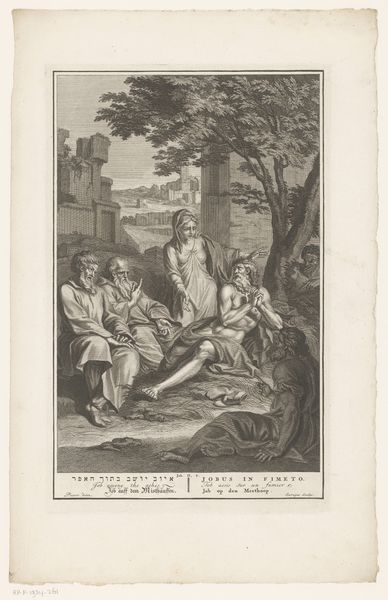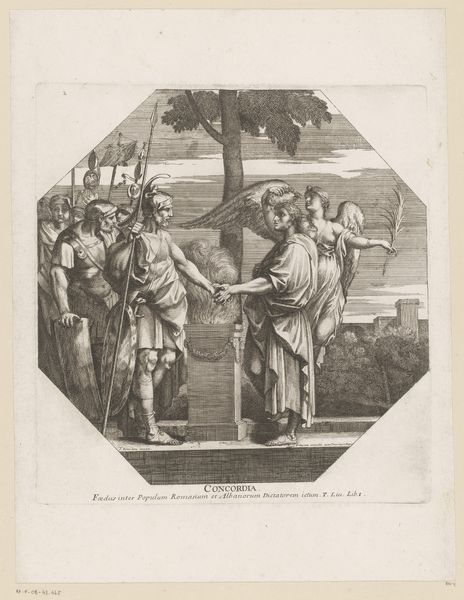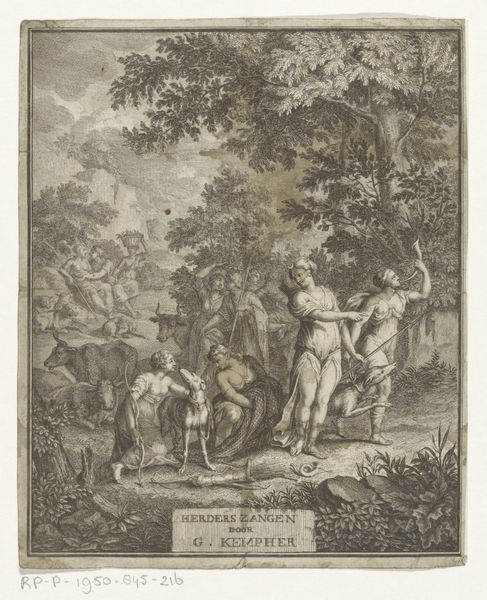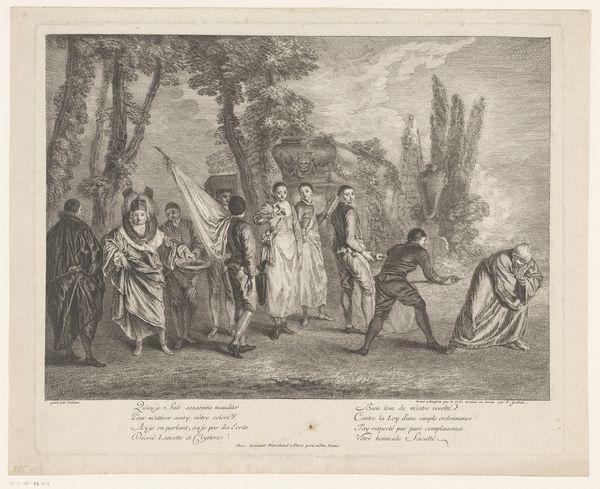
print, engraving
#
baroque
# print
#
landscape
#
figuration
#
history-painting
#
engraving
Dimensions: height 354 mm, width 221 mm
Copyright: Rijks Museum: Open Domain
Curator: Standing here, the scene depicted in Nicolas Pigné's engraving from 1728, "Jeroboam and the Prophet Ahijah," immediately feels fraught. There’s a landscape setting, but all the tension is right up front with these two figures. Editor: Yes, it's all about the dramatic exchange. My eye is drawn immediately to the gesture of the prophet Ahijah, the finger pointed accusingly skyward while Jeroboam seems almost caught in the act, tearing cloth...it feels so visually… biblical, doesn't it? Curator: Absolutely, there’s a Baroque flair for drama here, heightened by the medium itself. Printmaking, and engraving especially, lends itself to bold contrasts, to the stark declaration. The scene is illustrating a moment from the Hebrew Bible where Ahijah prophesies the splitting of Israel by tearing a garment into twelve pieces, ten for Jeroboam. It's destiny, rent asunder! Editor: The city behind them becomes then an almost detached witness, this complex society soon to fracture. Knowing that context adds such weight to the physical action – the tearing, the pointing. And even the landscape seems to reflect this disruption, a sky that doesn’t quite settle, a rugged almost unwelcoming terrain… Do you think Pigné was attempting to give the viewer a moral position? Curator: Possibly, or perhaps more likely seeking to vividly portray the power and drama inherent in prophecy and its impact. Consider the expressions— Ahijah, stern, unwavering, and Jeroboam’s body language seems a mixture of defiance and recognition of something larger at play. The architecture in the backdrop, almost romantic and idyllic. A poignant symbol perhaps of something being tragically lost. Editor: It does feel almost romantic, but unsettled at the same time… and that landscape feels, now that you mention it, almost a memory… a visual cue to what will pass as time continues. What really intrigues me is the decision to set the scene quite plainly like that. It doesn’t look like a typical biblical story to me. Curator: True, while filled with theatrical Baroque tension, the styling is pared-down, offering this narrative up for the viewer’s judgment, and still feels current, you know? That power play continues to occur every day. Editor: You’re so right… It almost forces you to question those pronouncements we keep seeing today, those messages about power and disruption… Nicely put.
Comments
No comments
Be the first to comment and join the conversation on the ultimate creative platform.
